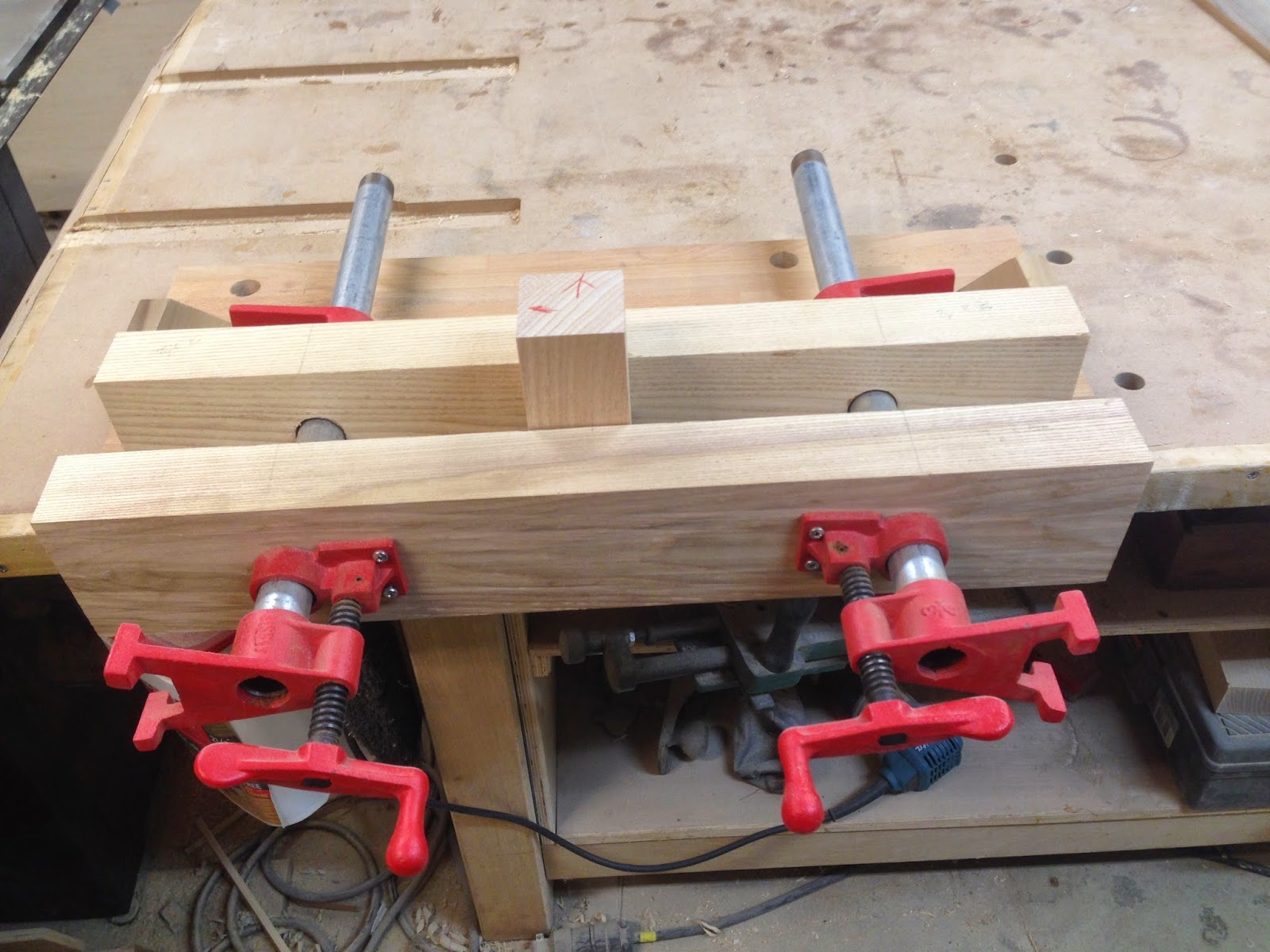Despite what some visitors to the shop may think, I don't own every tool that one can own. (Maybe in a dream. A dream that also includes a 10,000 sq. ft. work space and nearly unlimited financial resources...) However, the fact is, that even if I did own one (or two!) of everything, I still wouldn't have everything needed to create every piece of furniture. If necessity is the mother of invention, then jigs are definitely the kooky cousins next door.
So what is a "jig," exactly? Put simply, a jig is usually a relatively specific creation, often shop built, that exists to either simplify or enable a specific woodworking task that isn't easily accomplished by tools in their "normal" state. For example, a table saw excels at cutting a parallel edge in wood. If you have one straight side, simply set the saw's fence to the desired width and you will soon have another straight side at the exact dimension required.
But how do you harness a table saw's fantastic ability to cut an exceptionally straight line and use that to make something like these tapered legs?
With a shop-made tapering jig!
This lets me hold a piece of wood at a set angle and push it through the saw cleanly, giving a nice, straight taper. And I made mine adjustable as tapered legs are a very common attribute of fine furniture.
But that's not the only jig I have made and use. Not even close!
Above are some table saw dovetail jigs, a plane-blade mitering jig for decorative banding, and a spline cutting jig.
My shop-made dovetail marker, which is set to match - what else? - my shop-made dovetail jig!
Even a custom Moxon-style vise that I can use for up close joinery work and holding large pieces of wood that don't fit into a standard face vise.
The truth is, there are often more ways to build a piece of furniture than there are to skin a cat, but when something is being custom built for a specific location or purpose, there's not always an off-the-shelf solution. Sometimes a jig is the only way to achieve and maximize the potential locked away inside a piece of wood. Sure, they take extra time to make. They're not very glamorous and - at times - they serve such a single and specific function that they actually become obsolete upon a project's completion.
(A good example of this would be the routing templates made to help form the details for these garage doors. They've long since gone into the scrap bin, but they were invaluable for creating those repeatable lines.)
Sure, a lot of times it would be faster to simply freehand a curved cut and avoid taking the time to make a template. Or it might be far simpler to just run some screws into a biscuited joint and call it "good enough" as opposed to routing strong, permanent grooves into casework with dado jig like this one:
But at Shy Dog, we strive to create custom furniture to last a lifetime. "Good enough" is not the standard to which we adhere. And if a project comes along that demands a new approach to construction, that's exactly what we create. Jig and templates are worth the effort to create when they deliver a consistency and repeatability that could not otherwise be achieved.
Yes, at times it does feel like I'm just making stuff to make other stuff, but if - in the end - the "stuff" we make ends up being treasured furniture that lasts generations into the future, than those jigs were very worth effort indeed...









No comments:
Post a Comment